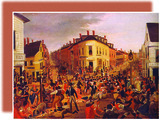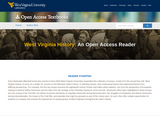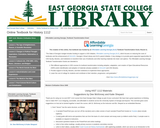
Early Industrialization in the NortheastA Vibrant Capitalist RepublicOn the Move: The Transportation RevolutionA New Social Order: Class Divisions
- Subject:
- Social Science
- Material Type:
- Module
- Date Added:
- 07/10/2017

Early Industrialization in the NortheastA Vibrant Capitalist RepublicOn the Move: The Transportation RevolutionA New Social Order: Class Divisions


U.S. History is designed for a two-semester American history sequence. It is traditional in coverage, following a roughly chronological outline, and using a balanced approach that includes political, economic, social, and cultural developments. At the same time, the book includes a number of innovative and interactive features designed to enhance student learning. Instructors can also customize the book, adapting it to the approach that works best in their classroom.

Kevin Barksdale (Marshall University) and Ken Fones-Wolf (West Virginia University) assembled this collection of essays, mostly from the journal they edit, West Virginia History, to serve as a reader for courses on the Mountain State’s history. In selecting essays, they emphasized pieces that addressed themes from differing perspectives. For example, the first two essays examine the eighteenth-century frontier and Indian-white relations, one from the perspective of Europeans seeking to destroy Native Americans and the other from the vantage of the Cherokee hoping for some security. Among the other topics highlighted in these essays are: the coming of the Civil War, the efforts of women and blacks to negotiate citizenship during Reconstruction, the struggles of immigrants and African Americans during industrialization, the impact of the Cold War, and episodes that might be grouped as part of the culture wars. As such, they offer multiple opportunities for students to compare and contrast the experiences of varying groups of West Virginians throughout the state’s history.

Lesson 1: The Age of Enlightenment, Reason & Scientific Revolution
Lesson 2: Changes in Political Thought: Imperialism, Colonialism, Nationalism, & Revolution
Lesson 3: Cultural Life, 1700-1900 - Arts, Music, Literature, & Religion
Lesson 4: The World Outside the West
Lesson 5: Industrialization & Lived Experiences
Lesson 6:The World in Two Wars
Lesson 7: Post-Colonial World Culture & Globalization

This course surveys the increasing interaction between communities, as the barrier of distance succumbed to both curiosity and new transport technologies. It explores Western Europe and the United States’ rise to world dominance, as well as the great divergence in material, political, and technological development between Western Europe and East Asia post–1750, and its impact on the rest of the world. It examines a series of evolving relationships, including human beings and their physical environment; religious and political systems; and sub-groups within communities, sorted by race, class, and gender. It introduces historical and other interpretive methodologies using both primary and secondary source materials.